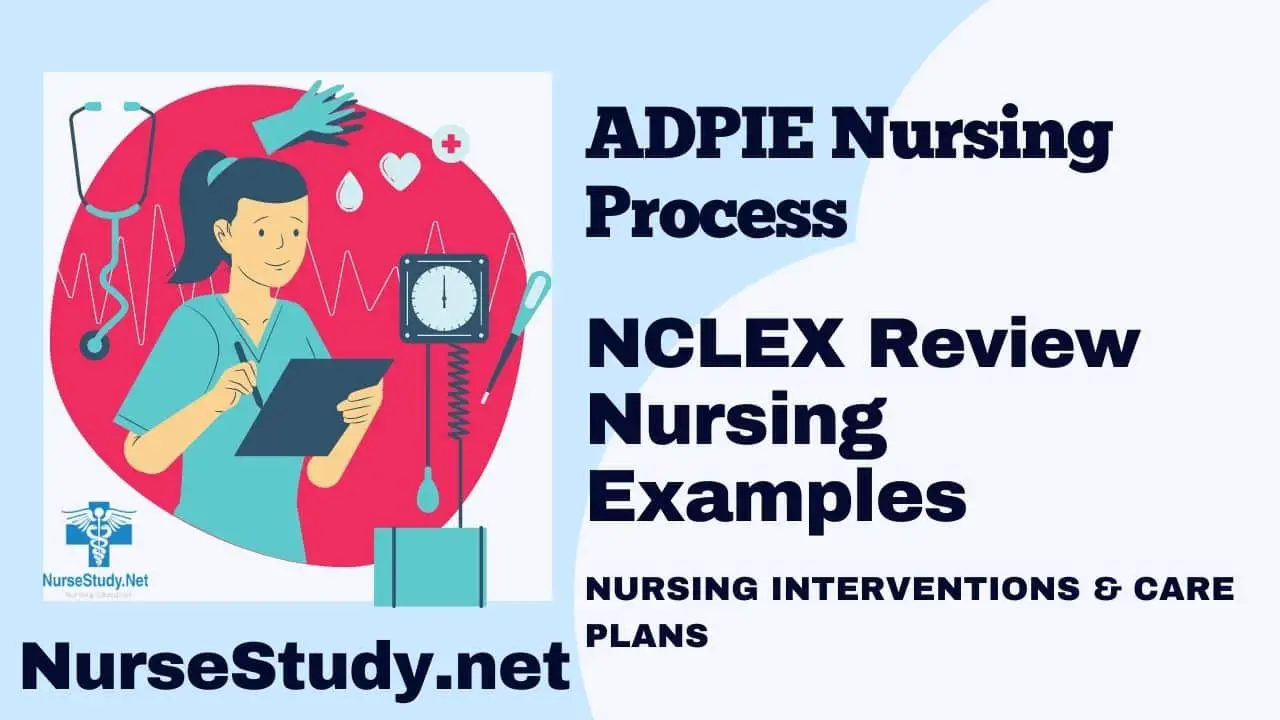The ADPIE Nursing Process is a fundamental framework that guides nurses in providing systematic, individualized patient care. This article will explore the ADPIE acronym, its significance in nursing practice, and how each step contributes to optimal patient outcomes.
What is ADPIE?
ADPIE stands for Assessment, Diagnosis, Planning, Implementation, and Evaluation. These five steps form the core of the nursing process, a systematic approach to patient care that ensures comprehensive and personalized treatment [1].
The Nursing Process Explained
The nursing process is a standardized guideline registered nurses and other healthcare professionals use to manage patient care effectively. It provides a structured approach to addressing the complex needs of diverse patient populations, including the growing challenge of caring for aging individuals with multiple health concerns [2].
Breaking Down ADPIE
Let’s examine each component of ADPIE in detail:
Assessment (A)
The first step in the nursing process involves gathering both subjective and objective data about the patient. This includes:
- Subjective data: Patient’s verbal statements, symptoms, and medical history
- Objective data: Measurable information like vital signs, lab results, and physical examination findings
Nurses use critical thinking skills to collect and analyze this information, forming the foundation for subsequent steps in the process [3].
Diagnosis (D)
Based on the assessment data, nurses formulate a nursing diagnosis. This step involves clinical judgment to identify actual or potential health problems. The North American Nursing Diagnosis Association (NANDA) provides standardized nursing diagnoses to ensure consistency in care.
Nursing diagnoses are prioritized using Maslow’s Hierarchy of Needs, ensuring that fundamental physiological and safety needs are addressed before moving on to higher-level concerns [1].
Planning (P)
The planning phase involves setting goals and outlining interventions to address the identified nursing diagnoses. Key aspects of planning include:
- Developing patient-centered goals
- Creating evidence-based care plans
- Ensuring goals are Specific, Measurable, Achievable, Relevant, and Time-bound (SMART)
Care plans enhance communication among healthcare providers and promote continuity of care across different settings [4].
Implementation (I)
This step involves putting the care plan into action. Nurses carry out interventions such as:
- Administering medications
- Performing treatments and procedures
- Providing patient education
- Collaborating with other healthcare professionals
Implementation requires skilled nursing care and effective communication with patients and their families [2].
Evaluation (E)
The final step in the ADPIE process involves assessing the effectiveness of the interventions. Nurses:
- Compare patient outcomes to the established goals
- Modify the care plan as needed based on new assessment data
- Continuously reassess and adjust interventions to ensure optimal patient outcomes
Evaluation is an ongoing process ensuring nursing care remains responsive to the patient’s changing needs [3].
The Importance of ADPIE in Nursing Practice
The ADPIE Nursing Process is crucial for several reasons:
- It provides a systematic approach to patient care, ensuring no important aspects are overlooked.
- It promotes critical thinking and clinical reasoning skills among nurses.
- It facilitates individualized care, tailoring interventions to each patient’s unique needs.
- It improves communication among healthcare team members.
- It enhances documentation and supports evidence-based practice.
By following the ADPIE process, nurses can deliver high-quality, patient-centered care that improves health outcomes and patient satisfaction [4].
Conclusion
The ADPIE Nursing Process is a cornerstone of modern nursing practice. By systematically moving through the steps of Assessment, Diagnosis, Planning, Implementation, and Evaluation, nurses can provide comprehensive, individualized care to their patients. This structured approach not only improves patient outcomes but also enhances the overall quality of healthcare delivery.
As healthcare continues to evolve, the ADPIE process remains a vital tool for nurses, guiding them in navigating complex patient needs and ensuring the highest standards of care.
References
- Toney-Butler, T. J., & Thayer, J. M. (2022). Nursing Process. In StatPearls. StatPearls Publishing.
- Karaca, T., & Aslan, S. (2018). Effect of ‘nursing terminologies and classifications’ course on nursing students’ perception of nursing diagnosis. Nurse Education Today, 67, 114-117.
- Khouri-Stevens, Z. K., & Collins-Bride, G. M. (2020). Assessment and care planning. In M. A. Nies & M. McEwen (Eds.), Community/Public Health Nursing: Promoting the Health of Populations (7th ed., pp. 167-193). Elsevier.
- Gulanick, M., & Myers, J. L. (2021). Nursing Care Plans: Diagnoses, Interventions, and Outcomes (10th ed.). Elsevier.
